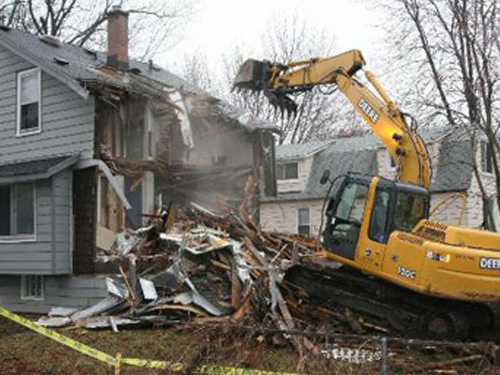PERIMETER BLOG
LATEST NEWS & INTERESTING FACTSHave you ever pulled into a business for the first time after following directions on your phone, stared at the mess in front of the shop, put your truck in reverse and high-tailed it out of there?
We have. It’s a big reason why Perimeter Drainage started dabbling in construction waste mini-bins a few years ago before realizing just how important it is to deal with your company’s leftovers.
Seriously, imagine looking up a construction company online – or a mechanic, a hardware store, or anyone else who works with materials once and then throws them away – and your first impression of the business is tainted by random construction garbage.
It won’t matter how good they are at their job. First impressions count for everything in this business.
Cut us a bit of slack here, because we’re going into selling mode. I promise it won’t last long.
Step 1: Let’s Talk
Once we take a call from an environmentally conscious company we spring into action. We deliver bins ranging in size from 8 yards to 40 yards and we educate our customers so they know what goes where. It takes a bit of time (a day – who doesn’t have time to keep their storefront looking sharp), but it’s a simple step to kickstart your construction waste management program.
Convinced? Give us a call.
Step 2: Materials
We’ve seen it all and we’ll deal with it all. Concrete, blacktop, clean fill, green waste, steel, hazardous waste, film industry props and materials, wood – I could go on. We take what’s been used and we separate it so the impact on our environment is kept to a minimum, and the effort you need to make is controlled, too. After all, you should be focussing on your job, right? Well, it’s a lot easier to do good work when you know the path your construction waste is going to take.
Step 3. Removal
Once the job is done or the bin or bins are full, we pick them up and take them where they need to go to be further broken down or separated. Nothing is released into the environment without being controlled or recycled first.
Alright, sales mode is off. We can help you, but we want you to help yourself first. Part of our process is educating people so they can use less materials and therefore keep their costs under control. Every time you use a material to create something – wood, metal, plastic – there are leftovers. It’s inevitable. However, we can often re-use these materials. Separating and re-entering construction waste into the flow of the industry contributes to an ongoing cycle of sustainability. Using fewer brand new materials means we won’t need to buy new products as often, which means supply will remain healthy while demand remains in check.
That’s the economic side of construction waste. The environmental side? If we can find a way to consistently take less from the environment, then we stand a better chance of living in balance with our surroundings for a lot longer. It hasn’t always been this way – we have a lot of ground to make up because of the mistakes of previous generations.
But we have to start somewhere.

